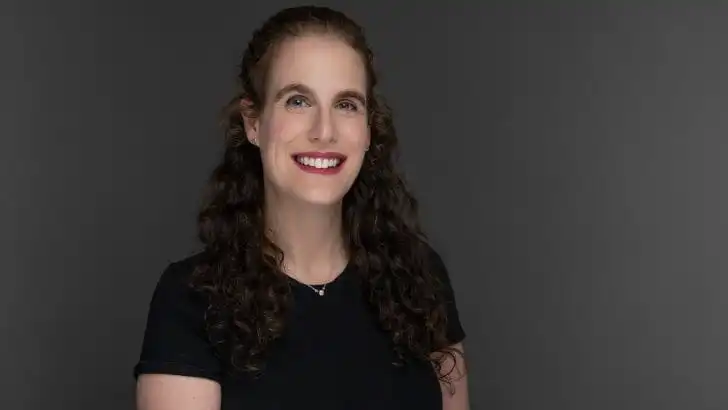I’m 60 years old and have a vested retirement account from a company for which I no longer work. Should I leave it there, or take it and invest it somewhere? I’m confused as to what to do with it.
-Rose
I’m so glad you submitted this question. It’s one that millions of savers are likely asking in the wake of the Great Resignation, which saw nearly 48 million workers quit their jobs in 2021.
Evaluating – and potentially rolling over – the retirement account held with a previous employer is essential when changing jobs. Your age may offer additional flexibility, but deciding what to do with an old retirement account hinges on multiple factors. Here’s what to know.
A financial advisor may help you understand the best way to manage your retirement accounts.
What to Do With Old Retirement Accounts
 When switching jobs, there are generally four options for addressing a workplace retirement account such as a 401(k):
When switching jobs, there are generally four options for addressing a workplace retirement account such as a 401(k):
- Leave it where it is
- Execute a rollover to an individual retirement account (IRA)
- Execute a rollover to your new employer’s retirement platform
- Cash it out
Each move has its pros and cons. Let’s address each.
Leaving Your Retirement Account Where It Is
Generally, if you have $5,000 or more saved with your former employer, you can choose to leave the money where it is.
You might consider staying loyal to an existing 401(k) if the plan includes company stock you’d prefer to keep or if it offers access to another juicy investment. One example is a stable value fund, a relatively low-risk investment that posts high yields and typically isn’t found outside workplace retirement plans.
One warning about leaving your investments: Don’t neglect to reevaluate and rebalance them regularly. Savers who forget about their 401(k)s could forgo nearly $700,000 in retirement savings throughout their lives due to higher fees or poorly allocated investments, according to Capitalize, a business that manages 401(k) rollovers.
A Rollover to an Individual Retirement Account (IRA)
You may qualify to roll over your money into an IRA. When done correctly, no taxes will be due on the amount transferred to the new account. If you qualify, you may also choose to convert a traditional retirement account to a Roth IRA or roll over a Roth 401(k) to a Roth IRA. Take note that converting a traditional account to a Roth may come with a significant tax bill. One solution to that, however, could be a series of partial Roth conversions.
The benefits of moving your retirement savings to an IRA may include lower fees, broader investment options and a new place to house your retirement savings that won’t change when your job does.
A Rollover to Your New Employer’s Plan

You may also opt to roll over your funds to your new employer’s platform. This may work well if you’d like to keep your retirement savings housed under the same roof. A word on rollovers: Make sure you follow the rules for executing a rollover properly. Since you’re 60, you won’t be hit with an early withdrawal penalty (the age cutoff is typically 59 1/2). But failing to deposit the money within 60 days could still result in a big tax bill.
Cashing Out Your Plan
At your age, cashing out may not hit you with an early withdrawal penalty. But unless you have a need – or a plan – for the money immediately, consider this route carefully. Cashing out a 401(k) means taking the balance as taxable income, which has major implications for your tax bill.
It doesn’t sound like you’re looking to start living off your investments. And at 60, you may still have years left of work and decades to anticipate in retirement. Sticking to an investment plan with those time horizons in mind is often wise. When it comes time to start living off your investments, it’s a good idea to work with a financial advisor to craft a tax-optimized withdrawal plan that supports your retirement lifestyle.
You’re currently not compelled to take required minimum distributions, called RMDs, from a traditional retirement account until age 72.
Thinking Through Company Stock
If your plan includes company stock and other trickier investments, executing the best and most tax-efficient strategy may be a little more complex. Certain tax strategies, such as rolling publicly held company stock into a brokerage account, may make sense in order to pay capital gains instead of income tax when the bill comes due.
If you’re questioning the best possible route for a complicated or high-value retirement fund, a financial advisor will be able to give you more individualized advice.
How to Invest Your Retirement Account
If you opt to roll over your retirement to a fresh account with a new employer or brokerage firm, your investment selections won’t transfer over. You’ll need to select new investments.
You may have dozens – or hundreds – of mutual funds, exchange-traded funds (ETFs), individual stocks and savings vehicles from which to choose. Your asset allocation will depend on risk tolerance, timeline, fees and other factors.
One common option is a target-date fund, which is designed to lower risk as you head toward a set retirement year. Or you may choose to design a portfolio using index funds and other investment products. Your retirement platform may include sample portfolios and other resources to help you determine your investment mix.
What to Do Next
Consider your options: You may choose to roll over, cash out or leave your retirement account where it is. Each pathway has its pros and cons, depending on your tax strategy, the investments you hold, your financial needs and your time horizon. Your age gives you some extra flexibility, which is nice. But if you have complicated investments or need advice on a large investment account, consider working with a financial pro.
Investing and Retirement Planning Tips
- If you have questions specific to your investing and retirement situation, a financial advisor can help. Finding a qualified financial advisor doesn’t have to be hard. SmartAsset’s free tool matches you with up to three financial advisors who serve your area, and you can interview your advisor matches at no cost to decide which one is right for you. If you’re ready to find an advisor who can help you achieve your financial goals, get started now.
- As you plan for income in retirement, keep an eye on Social Security. Use SmartAsset’s Social Security calculator to get an idea of what your benefits could look like in retirement.
Susannah Snider, CFP® is SmartAsset’s financial planning columnist, and answers reader questions on personal finance topics. Got a question you’d like answered? Email AskAnAdvisor@smartasset.com and your question may be answered in a future column.
Please note that Susannah is not a participant in the SmartAdvisor Match platform.
Photo credit: ©Jen Barker Worley, ©iStock.com/PeopleImages, ©iStock.com/DragonImages
